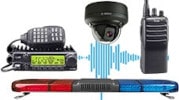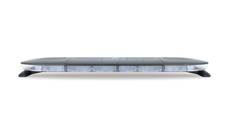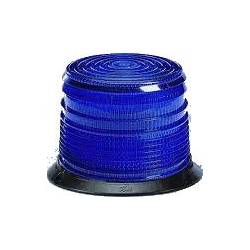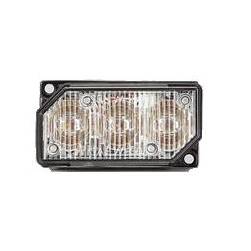- Special Offers
- Transceiver Radio
- Transceiver Accessory
- Antennas
- Antenna Accessory
- Cable
- Connector
- Installation Material
- Installation Tools
- Measuring Equipement
- Body Worn Camera
- Electrosmog
- Telephone
- Baby Monitor
- Fever Thermometer
- Radio Device
- Set-top Boxes
- Personal Protective Equipment
- Motorcycle Helmet Speaker
- Car Equipment
- Voltage Converter
- Dry Cell
- Battery
- Battery Charger
- Emergency Signal
- Blue LED Lightbar
- Blue Beacon
- Blue and Red Perimeter Lights
- Amber Signal
- Sound Signal
- Light and Sound Signal Accessory
- Traffic Engineering
- LED Lamp
- Smart Home
- Mosquito Repellent Device
- Market - Other Products
- Discontinued Products
Emergency Signal
- further categoriesEmergency signals means a combination of fixed or movable (mobile) lamps fitted to a motor vehicle and emitting a flashing blue or blue-red light and an audible signal.
Only the vehicle using the emergency light and sound signal together is granted the right to disregard certain rules.If the emergency vehicle uses only the blue flashing light signal, it remains obliged to comply with the rules of the Highway Code. A system using a emergency signal and sound signal is often referred to in everyday language as a police flashing light.
In our emergency signal light product portfolio you can find SoundOff Signal, Code3, Premier Hazard, Sirena and Strobos brands. The blue/red flashers are available in the form of lightbars of different sizes even with integrated speaker. Emergency signal perimeter lights are typically mounted on a grille, door, rearview mirror or behind a windshield. The blue mobile lights are available with either a fixed, drill-in mounting or a magnetic base. Previous technologies, halogen and xenon bulbs have now been replaced almost without exception by LED technology which guarantees extremely reliable, long life and low consumption. Our products comply with R65 lighting parameters and R10 EMC compliance. You will find additional, extra services for almost all of our products, such as installation of devices in a vehicle, service or maintenance.
What is the purpose of the emergency signal?
The emergency sign is responsible for the prevention of imminent threats to human life, limb, health, property or the human environment, the fulfilment of obligations under international treaties, the rescue of damage, the protection of national defence, national security and public safety, and the performance of tasks in the priority interests of the State.
What does the police flashing light give you the right to do?
A vehicle using its emergency light and sound signals together may disregard road signs and many provisions of the Highway Code, but only if its behaviour does not endanger road safety or the safety of persons and property and it is satisfied that other road users have allowed it to proceed unhindered. (Joint Decree 1/1975 (II. 5.) KPM-BM on the Rules of the Road Traffic (KRESZ) § 49 (2))
In no case shall traffic participants have priority over motor vehicles using a emergency light. E.g. pedestrians, cyclists.
What legislation refers to the use and installation of blue lights?
- Decree No 6/1990 (IV. 12.) of the Ministry of Transport, Building and Urban Affairs on the technical conditions for the registration and operation of road vehicles [Technical conditions of operation of the distinguishing and warning lights (66§)]
- ORFK Instruction No. 1/2017 (I. 18.) on police tasks related to the authorisation and control of the installation and use of devices for distinguishing and warning signals
- 12/2007 (III. 13.) IRM Decree on the rules for the installation and use of devices for distinguishing and warning signals (Distinguishes between users who can only install the signals with an official permit and those who can only install the signals without an official permit.)
Types of emergency light signals by technology:
- Halogen blue lamp: Typically a rotating lamp with a standard H1 or H7 bulb and a rotating mirror.
- LED blue flashing: A flashing lamp fitted with an LED bulb, where the LED modules either flash simultaneously or imitate a rotation by flashing individual LED bulbs. The LED technology gives them a long lifetime.
- Xenon Blue Flashing: Flashing lamps with Xenon gas-filled bulbs. They are nowadays marginalised due to the high cost of the technology.
Components of a emergency sound and light signal
- Lightbar: Lightbars available in different widths according to the size of the vehicle, which can be fixed to the roof of the vehicle by means of a fixed or magnetic design.
- Beacon: Indicators that can be used as supplementary signals or as stand-alone indicators, either fixed to the roof or with a magnetic design.
- Perimeter lights: LED technology flashers for mounting in the radiator grille, rear-view mirror or door.
- Loudspeaker: A loudspeaker to be fitted in the light bridge or to be mounted separately in the engine compartment to provide a distinctive audible warning.
- Control unit: A control unit for controlling the light and sound, which is also the amplifier for the loudspeaker. The control unit may also have a hand-held microphone which makes the system suitable for intercom or loudspeaker announcements.
The beacon light signal shall be mounted at the highest point of the vehicle, ensuring 360° visibility. If this is not possible, an additional perimeter light shall be used.




